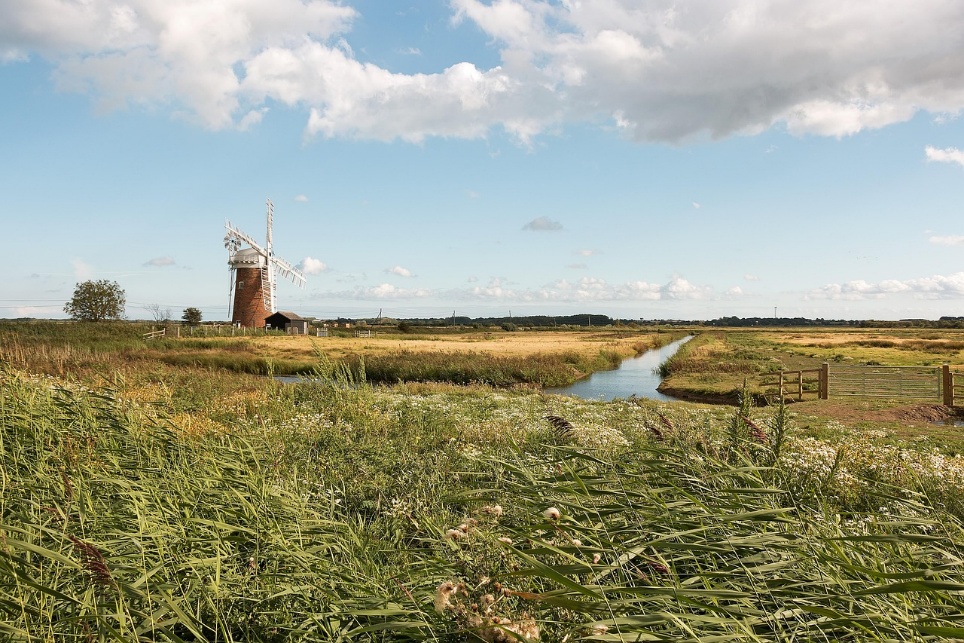Landscape Recovery: A Reinvented ESA or Just a Rebrand?

The government’s Landscape Recovery Scheme (LRS) has been positioned as a major step forward in restoring nature and delivering Biodiversity Net Gain (BNG). Yet, for those of us who worked on the Environmentally Sensitive Area (ESA) scheme, its principles feel strikingly familiar. Is this truly a fresh approach, or is it simply the ESA model repackaged for the 21st century? More importantly, does it provide the long-term stability needed to integrate environmental recovery with rural development—and how does it align with the government’s newly announced Land Use Framework consultation?
A Legacy of Collaboration: Lessons from ESA Schemes
As an adviser with experience in both ESA and LRS, I’ve seen first-hand how long-term partnerships between landowners and government bodies can transform landscapes. The ESA scheme, introduced under MAFF (now Defra), built trust with farmers and landowners, providing clear incentives to manage land sustainably. It proved that successful environmental schemes are not just about funding but about relationships, consistency, and balancing conservation with productive land use.
A key strength of ESA schemes was their gradual, bottom-up approach. Farmers learned from one another, taking confidence from neighbouring successes. Local advisers played an integral role—encouraging participation, providing guidance, and fostering a sense of collaboration. In contrast, LRS is structured as a high stakes, ‘all-in’ model, requiring agreements in advance. Farmers can engage in the development phase with relatively low risk, but committing to a 20-year partnership—often involving extended neighbours and locking into private finance—is a far bigger leap.
This raises a crucial question: how many of these initial projects will translate into reality? With legal fees and consultancy costs mounting, there is a genuine risk that some LRS initiatives could collapse before implementation. The end of this year, when the first wave of development projects conclude, will be a key test.
The Need for Long-Term Thinking in Rural Development
Environmental schemes cannot exist in isolation from broader rural development. Farming businesses need stability, and land use decisions must consider economic viability alongside conservation. The newly announced Land Use Framework consultation presents an opportunity to integrate environmental policy with rural planning, ensuring that schemes like LRS do not conflict with wider agricultural and community needs.
For this framework to be effective, it must embrace long-term land management strategies. The danger is that without consistent funding and clear alignment between environmental and rural policies, schemes like LRS risk becoming another short-term policy initiative rather than a true landscape-scale revolution.
Who Leads, and What Does That Mean for Delivery?
One fundamental difference between ESA and LRS is the role of those leading the projects. LRS places significant influence in the hands of the consortium leading each bid, which can be both a strength and a weakness. While this offers local empowerment, it also means that the scheme’s objectives can be shaped by the priorities of the lead organisation. For example, where an NGO such as a Wildlife Trust leads a project, the focus may lean more towards conservation rather than a balanced approach that integrates food production and rural livelihoods.
This flexibility could result in varying interpretations of LRS’s overarching aims. While local leadership is valuable, the scheme must ensure that it remains coherent in delivering both environmental and rural development outcomes.
Does LRS Deliver on BNG and Long-Term Land Use Goals?
BNG is now a legal requirement in planning, meaning that developers and landowners alike must contribute to measurable biodiversity improvements. But how well does LRS fit into this evolving landscape?
- Funding and Commitment: ESA agreements provided predictable, stable support, while LRS operates on a competitive model that could deter long-term investment. The Farming and Countryside Programme (FCP)sits awkwardly between being an income support scheme—with little targeting or control over uptake—and an environmental scheme. As a result, funding availability for LRS is uncertain, making it difficult for projects to gauge what they are actually bidding into.
- Strategic Land Use Planning: The Land Use Framework consultation presents an opportunity to align landscape recovery with food production, rural livelihoods, and climate resilience. However, without integration, LRS may end up in a policy silo, limiting its contribution to wider land-use priorities.
- Trust and Delivery: The ESA scheme worked because it fostered genuine collaboration. For LRS to succeed, it must not only engage landowners but also ensure that its ambitions align with practical realities on the ground.
A Rebrand or a Revolution?
LRS undoubtedly draws from past schemes, but its long-term viability depends on how well it integrates with wider land-use strategy and rural development. If Defra truly wants to drive transformational change, it must ensure that environmental schemes are embedded in a broader, long-term vision—one that links nature recovery, food security, and rural economies under a cohesive framework.
The Land Use Framework consultation presents an opportunity to get this right. However, without long-term funding commitments and cross-sector alignment, LRS risks becoming another short-lived policy experiment rather than a genuine driver of landscape-scale recovery.
The real test will be whether, in a decade’s time, we look back and see LRS as the start of a lasting transformation—or just another policy cycle revisiting the same ideas under a different name.

